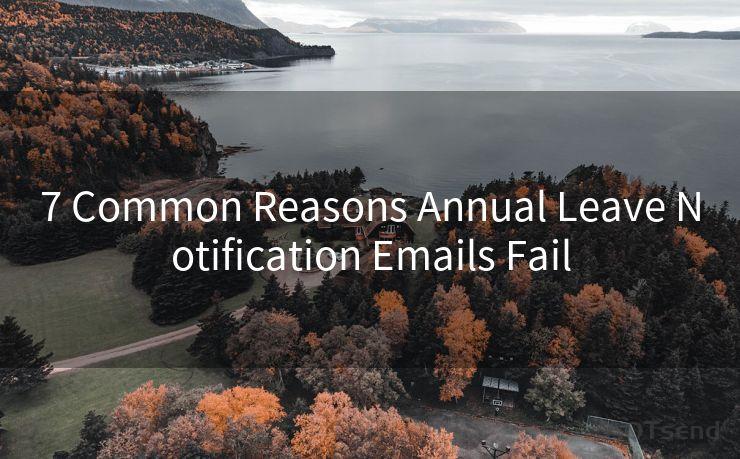7 Common Reasons Annual Leave Notification Emails Fail




When it comes to managing annual leave, effective communication is key. Despite this, many annual leave notification emails often fail to achieve their intended purpose. Here are seven common reasons why these emails might not be as effective as they should be.
1. Vague or Missing Details
One of the most common reasons annual leave notification emails fail is due to vague or missing details. It's essential to include all the relevant information such as the dates of leave, the reason for leave, and any work arrangements made during the absence. Without these details, colleagues may be left confused, leading to miscommunication and potential workflow disruptions.
2. Poor Timing
Timing is everything when it comes to sending annual leave notifications. If an email is sent too late, it may not give colleagues enough time to adjust their schedules or make necessary arrangements. Conversely, sending the notification too early might lead to it being forgotten by the time the leave actually occurs.
3. Unclear or Complex Language
Using unclear or overly complex language in your annual leave email can create confusion and misunderstandings. It's important to use simple, direct language that gets the message across quickly and efficiently. Avoid jargon or technical terms that might not be familiar to all recipients.

4. No Clear Call to Action
A successful annual leave notification email should include a clear call to action. This could be asking recipients to confirm receipt of the email, informing them of who to contact in case of emergencies, or providing instructions on how to handle specific tasks during the leave period. Without a clear call to action, recipients may not know how to respond or what steps to take.
5. Lack of Personalization
Emails that are impersonal or generic often fail to engage the reader. Personalizing your annual leave notification by addressing recipients directly and explaining how your absence might affect them can help increase engagement and understanding.
6. Formatting and Design Issues
Poor formatting and design can make an email difficult to read and understand. Use headings, bullet points, and clear paragraphs to structure your information logically. Avoid using large blocks of text or complex layouts that might overwhelm the reader.
7. Failing to Follow Up
Finally, not following up on your annual leave notification can lead to communication breakdowns. Consider sending a reminder email a few days before your leave begins, or checking in with key colleagues after you return to ensure everything went smoothly during your absence.
By avoiding these common pitfalls, you can craft more effective annual leave notification emails that keep your team informed and minimize disruptions during your time off. Remember, clear, concise, and timely communication is essential for maintaining workflow and team harmony.




🔔🔔🔔
【AOTsend Email API】:AOTsend is a Managed Email Service for sending transactional emails. Support Email Types: reminders, authentication, confirmations, notifications, verification codes, invoices, password resets, account activations, billing statements, two-factor authentication (2FA), and one-time passwords (OTP) emails, etc. $0.28 per 1000 Emails. 99% Delivery, 98% Inbox Rate.
You might be interested in:
Why did we start the AOTsend project, Brand Story?
What is a Managed Email API, How it Works?
Best 25+ Email Marketing Platforms (Authority,Keywords&Traffic Comparison)
Best 24+ Email Marketing Service (Price, Pros&Cons Comparison)
Email APIs vs SMTP: How they Works, Any Difference?
Scan the QR code to access on your mobile device.
Copyright notice: This article is published by AotSend. Reproduction requires attribution.
Article Link:https://www.mailwot.com/p1181.html



